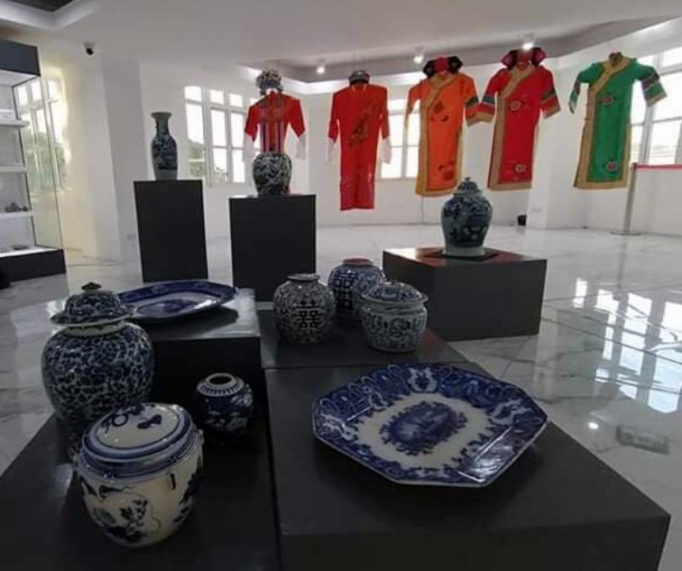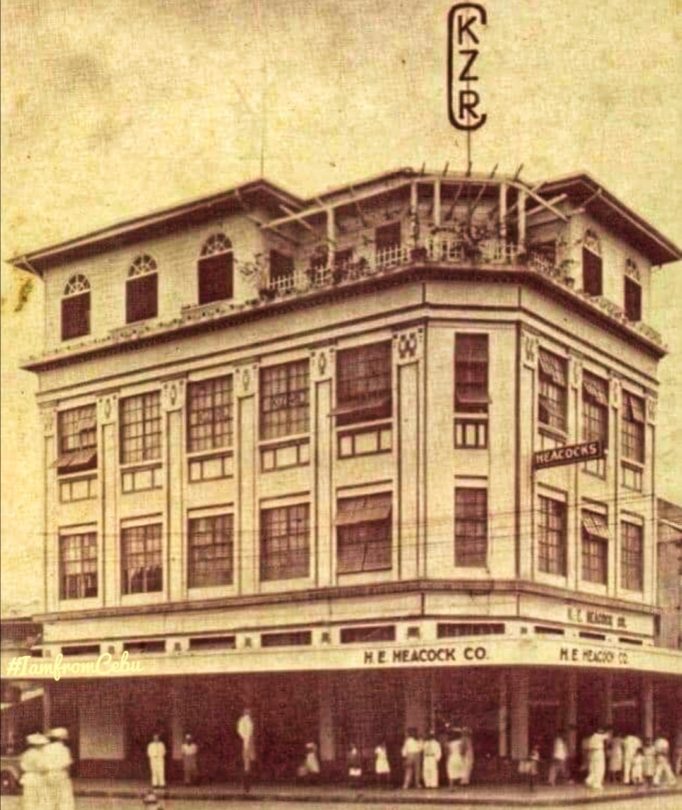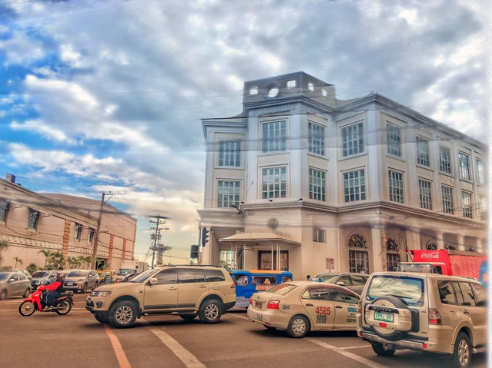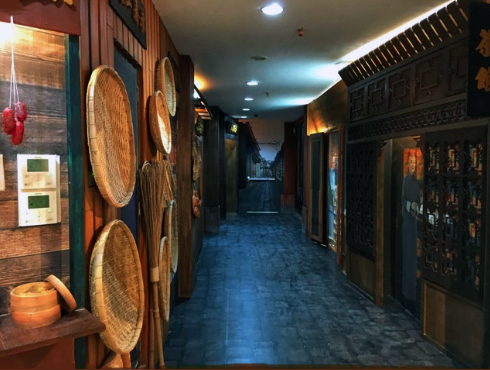The Sugbu Chinese Heritage Museum Foundation, Inc. (SCHMFI) is a formal institution based in Cebu City. It was created with the main task of building the first Chinese-Cebuano museum to showcase centuries of collaboration between the Chinese and Filipino people. The Foundation was established on September 2010, inspired by reflections during a Jesuit Chinese-Filipino Lay Apostolate conference that pointed to the relevance and importance of the Chinese presence in Cebu. The idea to establish the Sugbu Chinese Heritage Center was conceived.
Bob D Gothong heads the SCHMFI Board of Trustees as Chairman, with Elizabeth Gan-Go as Vice-Chair. The Board includes Ambassador Francisco L Benedicto, Senior Advisor; Ricarido Delfin A King, Treasurer; Jose R Soberano III, Assistant Treasurer; and Robert J Diño, Secretary and Auditor; Engr. Nepoleon G Co; Jaime L. Sy; Rev. Fr. Ben Sim, SJ; Engr. Kenny Jay T Lee; Mrs. Marlinda Angbetic-Tan; Rev. Fr. Manuel A Uy, SJ; Rev. Fr. Jason K Dy, SJ; and National Museum Director Jeremy Barns. The Sugbu Chinese Heritage Museum was established by the Foundation to share the history, heritage, and contributions of the Sugbu Chinese to Cebu in various fields.
Maritime trading was the main link between Cebu (Sugbu) and China. Sugbu means strong wave. Prior to the arrival of Spanish explorer Miguel Lopez de Legazpi in 1565, Cebu showed evidence of active trade relations with China and other Southeast Asian countries. Archeological excavations yielding Chinese trade pottery as well as early accounts like that from Venetian chronicler Antonio Pigafetta, who sailed with Ferdinand Magellan’s crew, all attest to the fact that Cebu had a fairly flourishing trade prior to the Spanish colonization of the Philippines. Sung Dynasty (960-1279) and Tang Dynasty (618-907) porcelain found in the Magallanes-Lapu-Lapu excavation sites highlight the importance of Cebu as a trading port with the Chinese at least 100 years before the Spaniards arrived. Early Ming vessels and other Chinese wares comprise 97% of total shards uncovered in Cebu City excavations. By 1590, Cebu participated in the Manila-Mexico Galleon Trade. (Source: Bruce L. Fenner, “Cebu Under the Spanish Flag, 1521-1896: An Economic and Social History,” 1985. Cambridge University Press, August 2009.)
Through exhibits, the museum would allow visitors to journey with the Sugbu Chinese, beginning with the 10th century pre-colonial Cebu, through the Sung and Ming Dynasties, Spanish and American regimes, up to the contemporary period. The museum aims to stimulate dialogue among peoples of diverse cultural backgrounds, and bring to the fore over 500 years of Chinese presence in Cebuano history, through vivid life narratives in innovative exhibitions, educational, and cultural programs.
The museum is based in the Gotiaoco Building located at the corner of M.C. Briones Street and P. Burgos Street, across the Cebu City Hall. This neoclassical structure was built in 1914 by Manuel Gotianuy to provide office spaces for the burgeoning shipping and trade businesses in the port area. He named the building in honor of his father Don Pedro Gotiaoco who came to Cebu in the late 1900s, and is also the forefather of the Gokongweis, Gotianuys, Gotianuns, and Gaisanos. The building is an important artifact as a tangible reminder of the rise of Cebu as a shipping and business center outside of Manila. Its tenants were pioneers in trade and commerce. It was declared a Heritage Site by the city Council of Cebu in December 2012.
The Gotiaoco Building was chosen among three other heritage buildings as the site for the museum because of its significance to the rise of Cebu as an entrepreneurial hub. Manuel Gotianuy leased the property from the Cebu Chamber of Commerce, which expired in 2013. His son, Atty. Augusto Go, turned over the property back to the Philippine National Government through the Department of Environment and Natural Resources (DENR). Through the facilitation of the National Museum of the Philippines, the DENR signed an agreement with the National Museum as Administrator of the property. In turn, a MOA was signed between the Subgu Chinese Heritage Foundation Inc. and the National Museum of the Philippines on 23-September-2013 to allow the use of the Gotiaoco Building as a museum for a period of 25 years.
The Gotiaoco Building was strategically located near the Cebu wharf. In 1904, a 30-foot temporary timber wharf was built in response to the growing economy of Cebu. Between 1904 and 1913, the port was further improved into a concrete masonry dock and bulkhead about 2600 feet long. Land reclamation of 5.26 hectares was undertaken to decongest the business area. Vessels of 23 draft feet could dock on the port. (Source: Bureau of Public Works, Quarterly Bulletin, 1916).
The Gotiaoco Building sustained heavy damage during World War II. After the war ended in 1945, the building was reconstructed through the Rehabilitation Finance Corporation that was created under the presidency of Manuel Roxas. These businesses were located in the building: RFC; Bryan & Landon Electric Company (predecessor of the Visayan Electric Company); Cebu Telephone Company; Gotiaoco Hermanos Inc; Insular Navigation Company; Visayan Surety and Insurance Corporation; Pastrano, Unchuan & Co; Joaquin Castro & Co.; Viuda de Hijos de F Escaño; Diao Contino Mertegui y Aboitiz; and La Naviera Filipina (Escaño & Aboitiz). Shipping companies included Macleod & Company; NT Deen & Co and Arlington Pond (which later became Pond & Deen Navigation Company in 1929); Tañon Navigation Inc. in 1933; and Insular Navigation Company.
After World War II, shipping companies like Royal Lines Inc. and the iconic William Shipping Lines of William Chongbian came and held office in Cebu City. In the 1970s, The First Insular Bank of Cebu occupied the ground floor, and later changed its name to Insular Bank of Asia and America. This later merged with the Philippine Commercial and International Bank, and stayed until 2005. Government agencies also occupied the Gotiaoco Building, such as: regional offices of the Department of Labor and Employment (DOLE); Department of Environment and Natural Resources – Provincial Environment and Natural Resources Office (DENR-PENRO); and Commission on Audit (COA), to name a few.
The SCHM aims to showcase success stories of Sugbu Chinese families as well as promote advocacies carried by influential Chinese entrepreneurs in the country in the fields of education, trade and commerce, medicine, culture and heritage, and values-related fields in religion, cuisine, science, arts, and politics.
The Foundation is duly registered as a not-for-profit organization with the Security and Exchange Commission (SEC). All donations to the museum are tax-deductible through our Philippine Council for Non-Governmental Organization (NGO) Certification Accreditation or PCNC. It is a private, voluntary, non-stock, non-profit corporation that acts as a service organization upon which its main function is to certify non-profit organizations that meet established minimum criteria for financial management and accountability in the service to under-privileged Filipinos (https://www.pcnc.com.ph/)
The Gotiaoco Building, which is over a century old, was carefully prepared for adaptive reuse. The restoration phase started in July 2016 and took more than 29 months. The work was guided by conservation principles with high priority given to preserving structural elements that were historically significant.
It took more than a year to raise funds to start the restoration phase to rehabilitate the structure and create the museum. Naming rights for exhibit spaces and halls in the museum will allow sponsors and benefactors to highlight their support to the cause of the Foundation and the Museum. Its trustees are strong advocates of the Sugbu Chinese heritage, and continue to campaign to achieve their mission.




